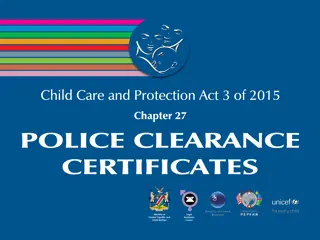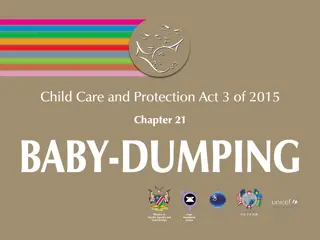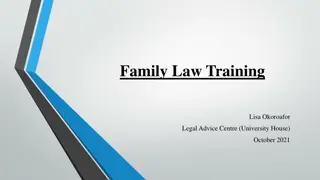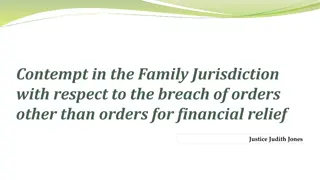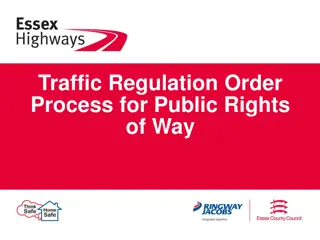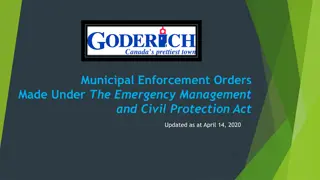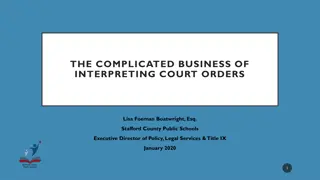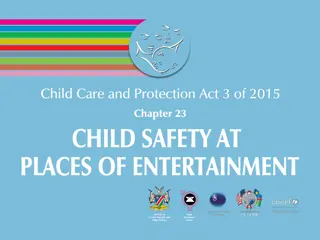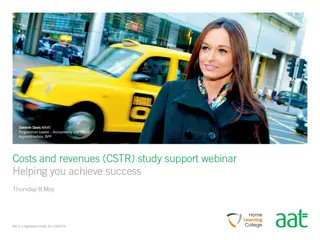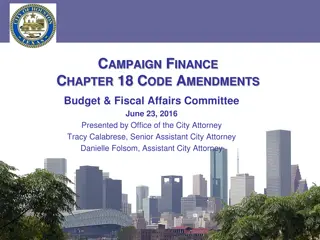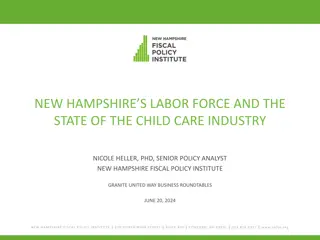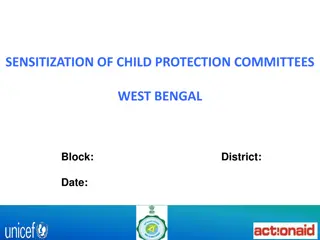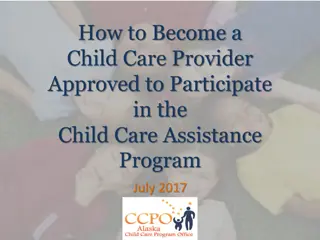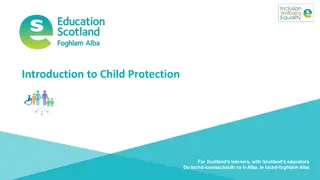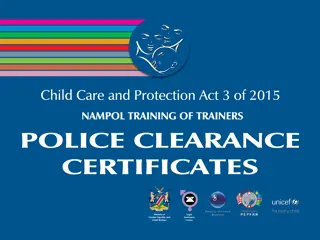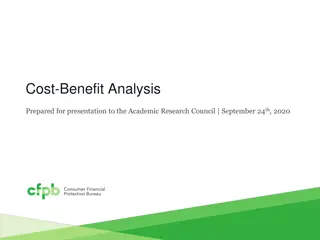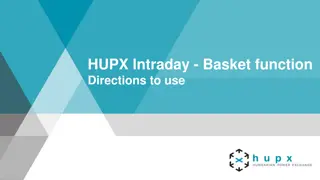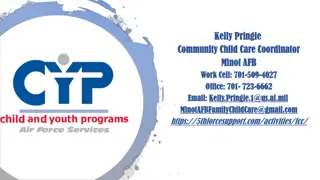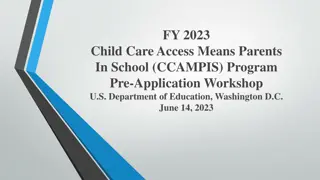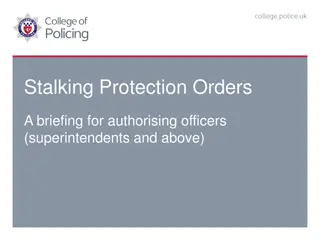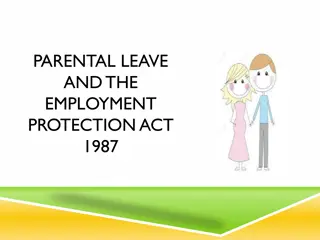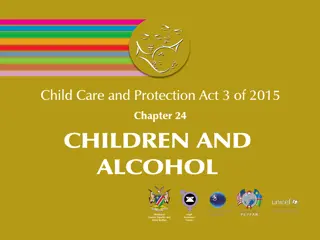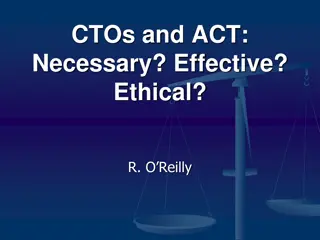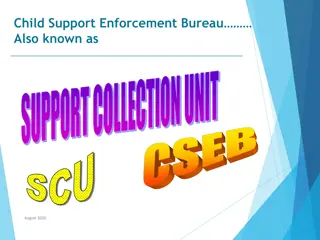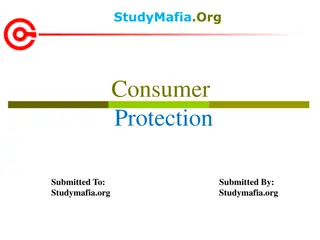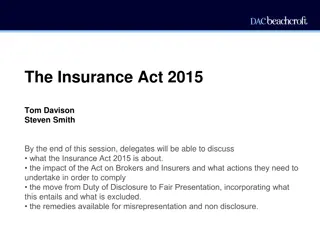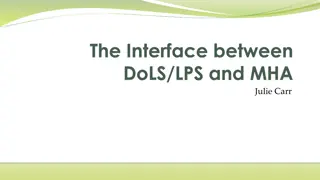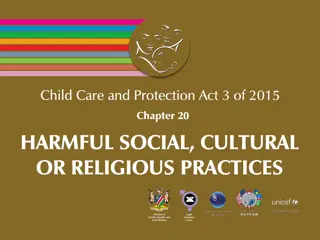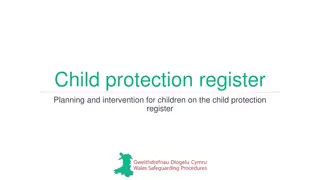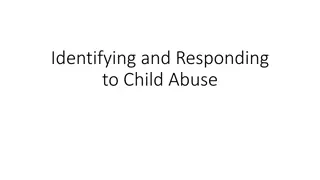Understanding Contribution Orders under Child Care and Protection Act 3 of 2015
A contribution order is a court order that requires parents or legally responsible individuals to pay for costs related to assisting a child in need of protective services. It covers reimbursement for various state costs, such as care for temporarily removed children and short-term emergency aid. The order can mandate lump sum or regular payments and is issued by the children's court based on recommendations from social workers or court initiative.
Download Presentation

Please find below an Image/Link to download the presentation.
The content on the website is provided AS IS for your information and personal use only. It may not be sold, licensed, or shared on other websites without obtaining consent from the author. Download presentation by click this link. If you encounter any issues during the download, it is possible that the publisher has removed the file from their server.
E N D
Presentation Transcript
Child Care and Protection Act 3 of 2015 Chapter 16 CONTRIBUTION ORDERS Ministry of Gender Equality and Child Welfare Legal Assistance Centre
Overview If a child is placed in alternative care by court order, the children s court may order the child s parents or other persons who bear legal liability for the child s maintenance to pay a contribution towards the child s care, if they have the means to do so. This rule on reimbursement also applies to certain other costs of State intervention to assist a child. A contribution order is similar to a maintenance order, but it is designed to reimburse the State for the costs incurred in assisting children in need in terms of the Act.
1. What is a contribution order? A contribution order is a children s court order which requires a parent or some other person who is legally responsible for maintaining a child to contribute to the costs incurred in assisting a child who is provided with protective services. It is similar to a maintenance order.
What does it cover? Reimbursement for four categories of State costs Care/services for child temporarily removed from family Alternative care State Short-term emergency aid maintenance grants
How is it paid? A contribution order must instruct a respondent to pay a lump sum or regular payments. It cannot cover contributions in kind.
2. Procedure Who is legally liable? duty of maintenance falls first and foremost on the parents extends to other ancestors (eg grandparents) if parent cannot maintain can extend to other blood relatives as last resort
What court? where the respondent lives, work or carries on business where the child ordinarily lives These rules are different from the ordinary rules on children s court jurisdiction. If a child is placed in alternative care, the court will often make a contribution order at the same time. where the child has been placed in terms of a court order
Request for contribution order A children s court may issue a contribution order - on the recommendation of a social worker OR on the court s own initiative. The court will issue a summons to the respondent if he or she is not already in court when the issue of a contribution order arises.
Terms of contribution order A contribution order must state 3 things: 2. what amounts must be paid 3. to whom the payments must be paid 1. who must pay WHO: the respondent AMOUNTS: a lump sum or regular payments, NOT contributions in kind TO WHOM: a Stateofficer specified by the court, NOT directly to child or child s care-giver
Duration of contribution order START DATE: from date of order, or from an earlier or later date but NOT from a date before the situation which created the costs arose (eg before the child was placed in alternative care) END DATE: flexible but NOT from a date after the situation which created the costs has ended (eg after the child is returned to the family) usually only for children under age 18, unless child is completing education or has a chronic illness or disability
Notice Clerk of the children s court must arrange for certified copy of the contribution order to be served on the respondent (if respondent is not present in court at the time). Copies must also be sent to Minister and social worker involved. Appeals Right to appeal to High Court against children s court decision to grant or refuse contribution order.
Change of address or work Respondent must inform the court of change of residential address or place of work. Penalty for failure to do so: fine of up to N$2000.
3. Enforcement 1. Attachment of wages: regardless of whether or not respondent has defaulted 2. Criminal offence: N$4000 or 12 months imprisonment or both 3. Execution against property: only after conviction for default
4. Change or cancellation Children s court may vary, suspend or rescind a contribution order, or revive the order after it has been rescinded On application by social worker (on behalf of child) OR respondent Process similar to procedure for initial contribution order.
5. Costs Police may not charge any fees for service of documents for contribution orders. No court fees are allowed. If respondent s property is attached, cost of execution must be paid out of sale of property. Contribution order proceedings are designed primarily to generate money to reimburse the State for child protection expenditures, so charging fees for obtaining such orders would be counterproductive. ***



